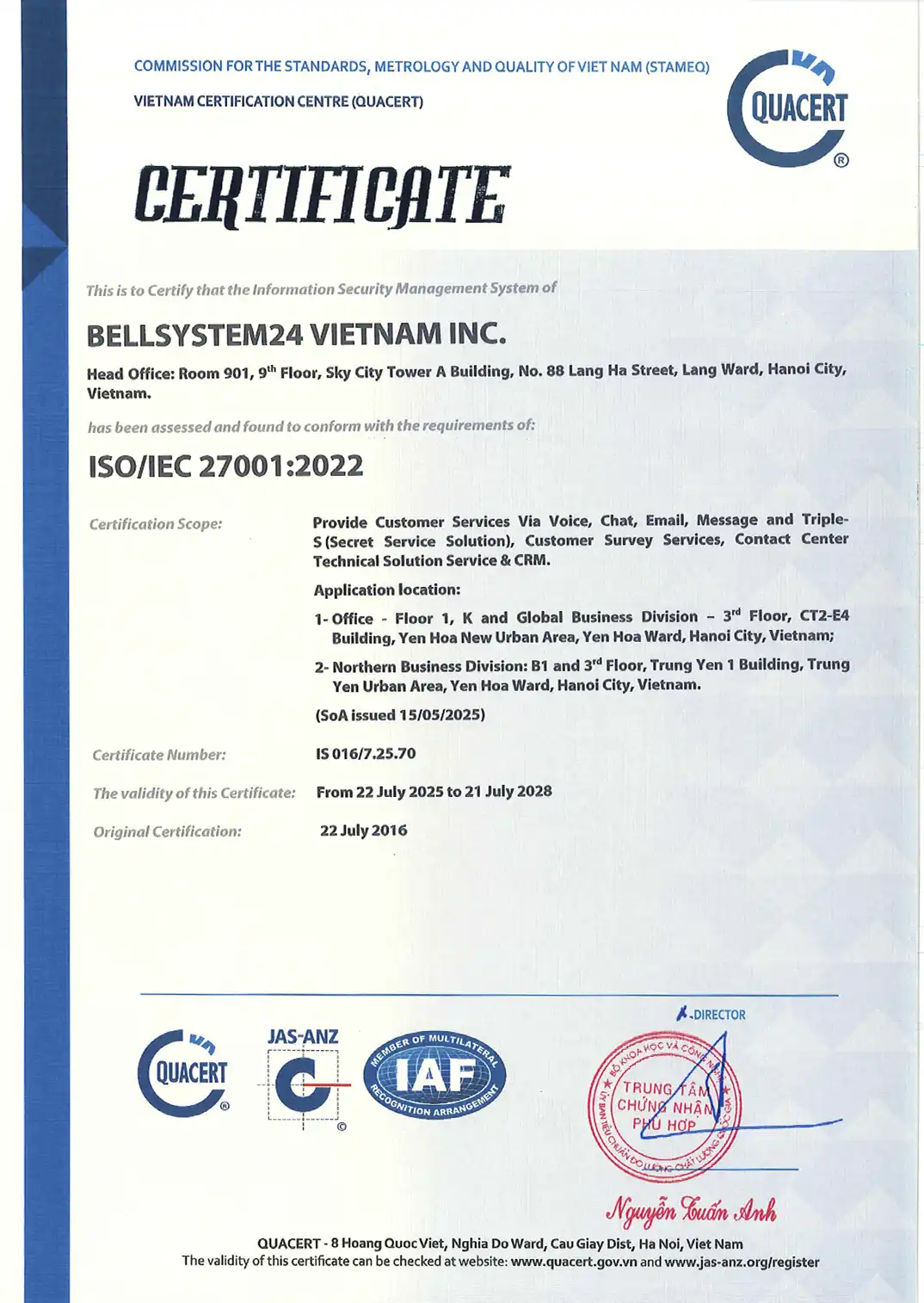AI Data Processing Service
Turn raw data into valuable assets.
Transform heterogeneous raw data into a clean, structured, and model-ready dataset from cleaning and normalization to format conversion.
Data cleaning
- Detect and remove duplicate data
- Handle missing values
- Eliminate noisy data that affects model performance
- Correct spelling errors and inconsistent formatting
- Identify and process invalid data
Data normalization
- Standardize date, phone number, address, and email formats
- Convert data to consistent scales (e.g., z-score, min-max scaling)
- Unify measurement units
- Normalize proper names and place names according to defined standards
Data transformation
- Convert unstructured data into structured formats
- Extract information from free text into defined data fields
- Parse data from HTML, XML, JSON, or PDF sources
- Generate new features from raw data
Format conversion
- Convert between formats such as CSV, JSON, XML, Parquet, Excel, PDF to Text, DOC to TXT, and OCR
- Handle encodings (UTF-8, ASCII, Unicode) to prevent display errors
- Resize and compress images
- Transcode video and audio data into appropriate formats and codecs
Integration & consolidation
- Combine data from multiple sources (APIs, databases, files)
- Resolve data conflicts during source merging
- Identify and reconcile duplicate records
Data enrichment
- Enrich data with information from external sources
- Geocoding: Add GPS coordinates from addresses
- Append demographic information
- Add sentiment scores to text
- Apply automatic or manual tagging and classification
Key highlights of AI training services
Save Time
Possess a large pool of AI trainers in a short time frame — accelerating project progress.
Diverse Sources and Formats
Collect data from hundreds of sources such as web scraping, APIs, documents, surveys, recordings, videos, IoT devices, etc., meeting all AI data project requirements.
No Setup Costs
No expenses for office space, infrastructure, recruitment, or staff training.
Guaranteed Performance
Each project is designed with specific SOPs and KPIs to ensure progress and target achievement.
Security and Safety
Operations comply with ISO 27001 information security standards. We commit to following data privacy regulations (GDPR, PDPA), intellectual property, and privacy rights. NDAs are signed with all stakeholders.
Integration with Other Systems
Provide consulting and integration with systems such as CRM, ERP, and Apps to enhance data management and reporting processes.
Key differences
- # Cost Optimization
- # Fast Deployment
- # Scalable & flexible operations
- # Multi-channel Data Collection
- # Information Security
- # Continuous Improvement
- # Multilingual Capability
AI Training Solutions for Industries
- Tech
- Finance, Banking
- Medical
- Travel
- Aviation
- Public Administration
- Logistics
- Manufacturing
- Education
- Ecommerce
FAQs
What is AI Data Processing Service?
AI Data Processing Service is the process of collecting, cleaning, labeling, transforming, and organizing data (in the form of text, images, audio, or video) to create structured, high-quality datasets for training, testing, and deploying artificial intelligence (AI) models.
How is AI Data Processing different from traditional data processing?
AI data processing has much stricter requirements compared to traditional data processing:
Higher accuracy: AI models learn directly from data, so even a 1–2% error can cause incorrect learning (garbage in, garbage out).
Balanced distribution: Data classes or categories must be properly balanced to avoid bias.
Feature engineering: It’s not only about cleaning data but also creating new features suitable for machine learning algorithms.
Comprehensive metadata: Requires detailed information on data sources, versions, and transformations for traceability and reproducibility.
Specific formats: Data must comply with the formats required by AI frameworks such as TensorFlow or PyTorch.
What types of data can BSV process?
Structured data:
Tabular: CSV, Excel, SQL databases
Time-series: Sensor data, financial data, logs
Relational: Data from multiple related tables
Semi-structured data:
JSON, XML, YAML
HTML, Markdown
Log files, configuration files
Unstructured data:
Text: Documents, emails, social media posts, transcripts
Images: JPEG, PNG, TIFF, medical imaging (DICOM)
Audio: WAV, MP3, FLAC
Video: MP4, AVI, MKV
What measures does BSV take to ensure data security?
We understand that AI data security is of utmost importance. BSV is fully committed to protecting all client information through the following measures:
Certified information security standards: Operations comply with ISO/IEC 27001:2022.
Non-disclosure agreements (NDAs): NDAs are signed with clients and all team members involved in each project.
Secure network infrastructure: Access control, firewalls, and secure private networks (VPN).
Strict access control: Only authorized personnel can access data, with strict supervision and traceability.
Protected working environment: Monitored 24/7, no external storage devices (USBs, phones) allowed.
Can BSV scale up to handle large projects?
Absolutely. With more than 4,000 trained staff and flexible management systems, we can rapidly scale up to meet large-volume data projects in multiple languages and domains.
Our workforce and infrastructure allow us to maintain both speed and quality assurance across all projects.
Which languages can be supported?
Multilingual support. We have personnel currently working on projects using English, Japanese, Chinese, Korean, Thai, Russian, French, Italian, and other languages.
How is the service charged?
We offer flexible pricing models to suit the budget and requirements of each project:
Per Data Point
Per Hour
Per Unit / Task
Fixed Price (Per Project)



